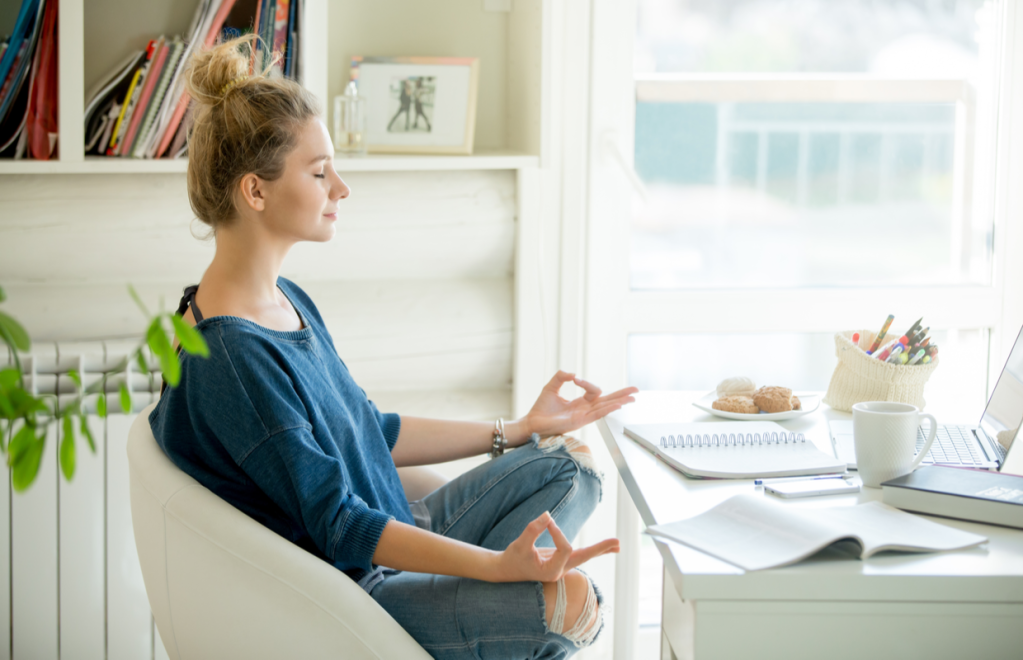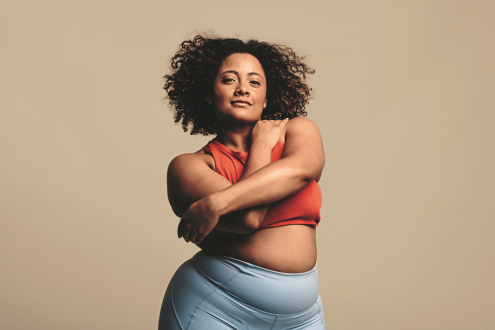Joy vs happiness: 3 ways to build a more joyful life
Rachel Fearnley reveals the key differences between joy and happiness, before sharing three ways to build a more joyful life.

Through her personal experience and lifelong studies, lifestyle mentor Rachel Fearnley has come to realise that there is a profound difference between genuine joy and fleeting happiness. There are also some simple methods we can all adopt to create a more joyful life.
What’s the difference between joy and happiness?
Joy and happiness are wonderful feelings to experience, but are very different. Joy is more consistent and is cultivated internally. It comes when you make peace with who you are, why you are and how you are, whereas happiness tends to be externally triggered and is based on other people, things, places, thoughts and events.
Because of this, aiming for joy is more beneficial in life, as it is less transitory than happiness and is not tied to external circumstances.
So many of us have lost touch with that feeling, not knowing how to cultivate joy any more, so we resort to quick fixes like alcohol, drugs and addictive foods, or find fleeting moments of happiness from other places without truly experiencing it and cultivating it for ourselves, for example by watching TV.
It can be challenging for us to shift our mindset from one of negative thinking to one of joy, so here are three things you should be doing to increase the amount of joy in your life:

1. Quieten your mind with meditation
It’s important to be able to tap into your heart rather than your head and your intuition rather than your thinking mind. Quietening the chatter in your mind through meditation and creating space within allows you to listen more closely to what brings you joy.
Not sure where to start? Try this simple body scan meditation exercise, which is perfect for beginners:
- Sit down or lay in a comfortable position. Gently close your eyes.
- Take a few deep breaths, in through the nose and out through the mouth. Pay close attention to how your breath feels as it enters and exists your body.
- Let your thoughts naturally come and go: don’t try to force them away. Simply observe and recognise them, before letting them go.
- Next, begin mentally scanning your entire body. Start from the head and work your way down through the neck and shoulders, the arms and hands, the chest and back and so on until you reach your toes.
- As you scan the body, notice any areas of tension or discomfort and consciously relax the muscles in this area.
- If you are unsure as to whether you are holding tension anywhere, try flexing or squeezing the muscles in each area of the body before relaxing them. This is a great way to heighten your awareness of the different areas in your body.
- After scanning the whole body, return your attention to your breath. Then, when you are ready, gently open your eyes again.
- At the end of any meditation, it’s helpful to observe how you are feeling now, compared to how you felt at the start.
2. Cut down on social media to build a more joyful life
We are so heavily influenced by what we ‘should like/do/have/buy’ that this so often is not in line with what truly brings us joy. For many of us, social media has become a necessity in our day. If ditching social media altogether is not an option, think about how you can cut down on it, for example:
- Checking social media sites just twice a day, once mid-morning, so you’re not starting your day with social media, and again late afternoon.
- Opting for a maximum of two portals of instant messaging communication that friends and colleagues can contact you on. I recall a time when an ex-employer was contacting me on text, WhatsApp, Viber, Skype, Facebook Messenger and regular phone calls. Needless to say, it was far too overwhelming!
- Choose the people you ‘follow’ or who appear in your feed wisely. If you like to get your daily fix of what’s happening around the globe, whether it be in world affairs, fashion or self-development, opt for those who inspire you, not those who bring you down.

3. Keep a journal and practise gratitude for the things that bring you joy
Cultivate gratitude wherever possible and even have gratitude for the things that challenge you, as these help you to grow and build strength. This also helps to define what brings you joy and what doesn’t.
In your journal, at the end of each day, write a list of 10 things that you are grateful for that day, it can be anything. Celebrate and recognise these aspects of your day. Soon you will see running themes, and when you do, intersperse your day with more of the good stuff and less of the ‘not so good’ stuff.
Having an attitude of gratitude makes us more appreciative and trusting, gives us better self-esteem and helps us bounce back from stress. It allows us to view the world, and our situation within this world, in a more positive, healthy way.
Just embrace the simple experiences and pleasures. When we’re moving at 100mph, we take the simple things for granted. These are often the things that top up our feelings of joy. When you’re more present, the simpler things become joyful; the food you eat, the air you breathe, the sounds of nature.
As many of my clients have experienced, the more they get in touch with their true self, the less they feel the need to seek from external influences to experience momentary happiness. Joy becomes a more constant state of being, it no longer becomes about what does or doesn’t bring you joy, as you begin to cultivate joy from the inside out.









